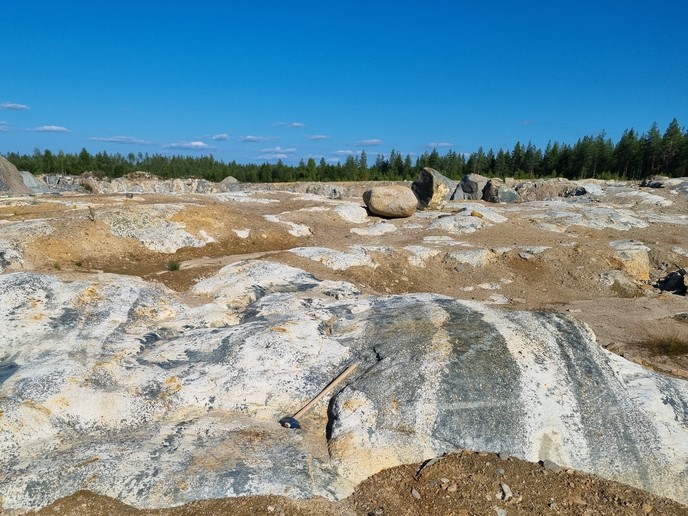New tools and knowledge target European supplies of orthomagmatic (critical) raw materials
The Earth has a layered structure rich in metals. Over the core, the mantle is the thickest shell. It is made of very hot molten or semi-molten rock (magma) that creates ‘currents’ as hot rock rises from the depths towards the thin, outermost crust and cooler rock descends. Magma (called lava when it reaches the Earth’s surface) forms igneous rock rich in minerals when it cools and crystallises. ‘Orthomagmatic’ sulfide and oxide ore deposits were the focus of the EU-funded SEMACRET(opens in new window) project. It considered Earth systems and processes beyond conventional mineral deposits for sustainable exploration of (critical) raw materials for a green energy transition. Scientists studied mantle-derived magmas, addressing gaps in the understanding of ore formation processes from magmatic sources of metals deep in the Earth to crystallisation and formation of mineral deposits at shallow depth.
Mineral systems approach
“SEMACRET used advanced simulations to enhance understanding of magma generation, deep magma transportation and magma-crust interactions during ore-forming processes. Modelling work was complemented by high-temperature experimental studies elucidating the role of favourable host rocks in ore formation,” explains project coordinator Shenghong Yang of the University of Oulu(opens in new window). Project research focused on both ‘rifting’ and ‘orogenic’ settings – where tectonic plates split and trigger seismic events and magma formation, or collide and deform (creating mountains), respectively. The project identified the main source of metals in rifting settings, structures called mantle plumes (large columns of hot rock rising through the mantle). The scientists also showed how the structure of the lithosphere (the crust and upper mantle) can control the formation of specific deposits. SEMACRET concluded that, in orogenic settings, the sub-continental lithospheric mantle and higher volatility of magmas play an important role in magma generation and ascent. “SEMACRET also improved various proxies used to predict high potential areas by using unconventional geodata reflecting the deep lithospheric structure and geological processes,” Yang notes. For example, seismic data was used to predict deep magma reservoirs.
Innovative geophysical inversion methods
Importantly, SEMACRET developed innovative ‘geophysical inversion methods’ essential for low-impact mineral exploration. These mathematical techniques estimate subsurface properties from geophysical measurements taken at or near the surface. For example, “low-environmental-impact passive seismic imaging is commonly used for imaging deep Earth structures. In SEMACRET, we developed an innovative inversion method targeting ore bodies in the shallow crust a few kilometres deep,” Yang explains. SEMACRET also developed methods for optimised 3D electromagnetic inversion and ‘full tensor magnetic gradiometry’, a relatively recent method in exploration. Finally, induced polarisation is another geophysical inversion technique that is very useful for low-sulfide deposits when the electromagnetic signal is not prominent. “Induced polarisation surveys are generally ground-based. In SEMACRET, the induced polarisation signal was extracted from more efficient and less time-consuming airborne-acquired electromagnetic data,” notes Yang. The team developed a QGIS(opens in new window) plugin integrating data processing, inversion, and visualisation for electronic and electromagnetic data to support others working in sustainable exploration.
3D mineral prospectivity modelling using drill core databases
Moreover, “SEMACRET developed machine learning-based 3D mineral prospectivity modelling and resource modelling for nickel-copper sulfide deposits based on drill core databases,” adds Yang. These have the potential to significantly reduce exploration drilling. SEMACRET has developed sustainable, low- to no-impact solutions for mineral exploration at the regional and local scale. They should support exploration companies and policy makers in their roadmaps to securing a sustainable supply of (critical) raw materials for Europe’s green energy transition.







